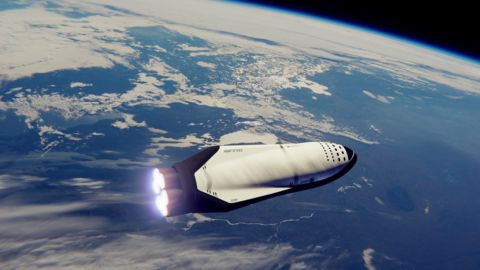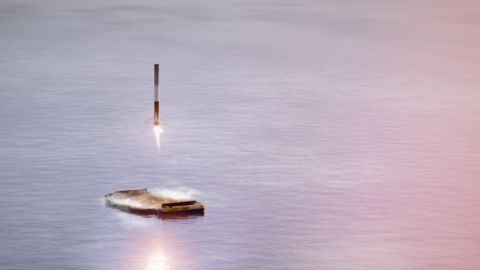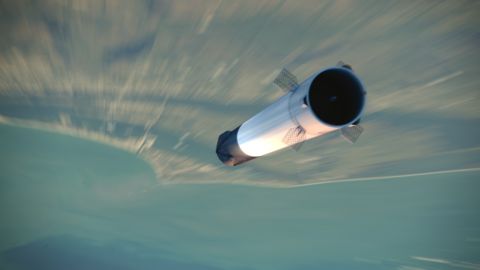app
Speedometer
 Get Speedometer on Google Play
Get Speedometer on Google Play
Speedometer (such a unique name, I know) is a basic, no-frills speedometer. It supports mph, km/h, m/s, and Mach (just in case.)
Read more (1 min)post Transcript of Tom Mueller's speech interview on May 2, 2017
Background info
On May 2, 2017, Tom Mueller, propulsion CTO at SpaceX, conducted a speech/interview with some members of the New York University Astronomy Society. This was streamed live on Twitch; I’ve transcribed it with the help of u/dansemacabred2, u/jclishman, and u/Zucal. Many thanks!
Check out the interview on twitch.tv, and the post in the SpaceX subreddit.
Read more (38 min)post I'm now on Patreon.
For some background, I’m currently creating all of my illustrations from a 2012 laptop (Lenovo T430, if you’re curious,) and it’s… not the ideal 3D graphics computer, to say the least. I’d love to upgrade, but it’s only necessary for 3D work; and I was (understandably) wary to spend money on a new computer without any way to recover the costs.
So I’ve made a Patreon page. Apparently, people actually like my work enough to send me some money for it; until now, the only way was via RedBubble (where I get 30% of the total item cost), or direct donations. Hopefully, there will be more incentive for people to pledge to me on Patreon, thanks to the rewards.
Read more (2 min)art Heart of Gold performs its Trans-Mars Injection burn

This piece shows the SpaceX Interplanetary Transportation System Mars lander performing the trans-Mars injection burn that marks the beginning of its coast to Mars.
Read more (3 min)art SpaceX Falcon 9 Booster Landing on OCISLY

My rendition of a Falcon 9 booster landing on Of Course I Still Love You, SpaceX’s East coast droneship. This is a triple-engine landing burn; while SpaceX hasn’t performed a triple-engine landing burn since JCSAT-16, very heavy GTO payloads at the edge of Falcon 9’s capability may require triple-engine landing burns in the future.
Read more (1 min)article Getting started with OpenGL ES 2.0 on Android (Draft)
Google’s Android developer documentation tends to be pretty bare. Third-party documentation and tutorials are usually years out of date and accompanied by code that was obviously hacked together for the tutorial; sometimes, they ask you to clone a GitHub repository to get started.
I learn by example, and all of the above makes it more difficult than it should be. I won’t provide example apps or copy-pasteable classes; instead, I’ll work through a problem, one step at a time.
I hope to make “Getting started with
art SpaceX Falcon 9 Booster Glide

My rendition of a Falcon 9 booster returning to Earth after a launch. The four grid fins are guiding it towards its landing pad as it hurtles downwards at supersonic velocities.
In this image, the Falcon 9 is at about 40km in altitude (with entry burn shutdown having occured seconds earlier) and is less than thirty seconds from the start of the landing burn.
Read more (1 min)article SpaceX Falcon 9: Liftoff to Landing (Draft)
Like all launch vehicles, SpaceX’s Falcon 9 is a marvel of engineering. It starts out at the launchpad, and in less than nine minutes, the second stage (and payload) have reached orbit and are now travelling at over 7500 meters per second (equivalent to a sea-level speed of Mach 22.) That’s really, really fast. And it’s something that every single launch vehicle must do to bring its payload into orbit.
Here’s a very short tl;dr:
- Reaching orbit is not the same as reaching space.
- To accelerate the payload to orbital velocities requires a lot of fuel.
- As the dry mass of the launch vehicle increases, the amount of fuel (and therefore energy) it can store decreases.
- Therefore, you want the vehicle to be as lightweight as possible and hold as much fuel as possible.
Rocket engineers have spent decades trying to make launch vehicles lighter. The original Atlas ICBM used balloon tanks; unlike a stiff internal framework of stringers underneath a metal skin, balloon tanks employ the pressurization of the tanks to maintain their shape. This makes for a very lightweight tank; however, it’s difficult to build and transport (as it must be pressurized at all times.)
The Falcon 9, though, is a bit different.

